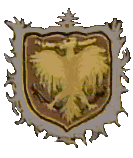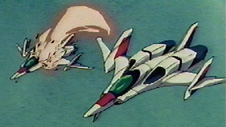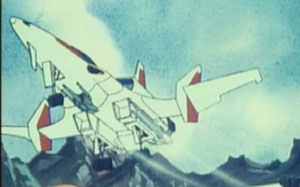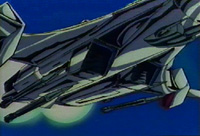

Designation:VF-7 Sylphid (A,B,C,D) Veritech Fighter |

|
||||

|
|||||
| Fighter mode | Guardian mode | Battloid mode | |
|---|---|---|---|
| Length : | 12.8 meter | 11.0 meter | - |
| Depth : | - | - | 4.0 meter |
| Height : | 3.5 meter | 7.7 meter | 10.7 meter |
| Breadth : | - | 6.5 meter | 6.5 meter |
| Wingspan : | 12.2 meter | 12.2 meter | - |
| Dry Weight : | 11.8 metric tons. |

While the electronics suites of these vehicles differed with their respective dates of operational service, all electronics were regularly updated, and during the Second Robotech War the following standard was in use:

4 hardpoints are mounted on the lower hull and two under each wing. Each hardpoint can carry:
Note: the VF-7 Sylphid cannot transform while the two wing hardpoints are loaded. Consequently, these two hardpoints are almost never utilised
Typical Payloads:
The armor of the Sylphid is composed of an advanced titanium-steel alloy. The armor stops all small arms fire, provides excellent protection against heavier infantry weapons, such as a 12.7mm machinegun round, and good resistance to light mecha-mounted weaponry, such as the Zentraedi 22.3mm HE autocannon round. The resistance against heavier weapons is markedly reduced, however.
The Sylphid provides full protection from nuclear, biological, and chemical hazards, using an overpressure cockpit environment activated by radiation and hazardous chemical sensors, or manually when biological warfare conditions are anticipated. The internal consumables supplies can provide atmosphere for one day maximum.
After the failure of the VF-4 project to deliver an advanced, capable and affordable veritech fighter to replace the obsolete VF-1 Valkyrie, two lighter veritech design projects were started, with the intention that the winner would be chosen as the RDF-wide general-use medium transformable fighter. The two designs became the VF-6 Alpha and the VF-7 Sylphid.
However, while the expeditionary forces elected to produce the VF-6 Alpha in large numbers, the Earth-bound Tactical Air Force disagreed with the choice of this design. Specifically, the TAF cited the VF-6 Alpha's lack of hardpoints and resulting loss of the ability to mount heavier ground attack missiles, and it's general reliance on short range missiles (implying other mecha with longer ranged missiles were also required). Finally a longer battle-turnaround time for the VF-6 Alpha was expected due to the use of an ammunition-fed gun pod and numerous internal missile holders where the Sylphid had only four hardpoints to load with new missile containers. In the end, the TAF decided to acquire the VF-7 Sylphid for its forces rather than the VF-6 Alpha.

The Sylphid shows distinct VF-1 influences in its forward hull, and the combined engine block/arm sections were reminescent of the failed VF-4. Compared to its predecessor, the famous VF-1, the VF-7 can carry its missile armament with it through all speed regimes, unlike the elder plane, whose missiles would be torn off their mounts long before it reached its maximum speed. Additionally, the Sylphid no longer carried a gun pod, or even ammunition dependent weapons. On the debit side, the Sylphid can only fire its missiles in Fighter mode or in certain flight regimes in Guardian mode, when the engines are pointing aft.
The Sylphid entered service with the Tactical Air Force in 2021, and remained in service with this unit until the Invid invasion. It became the primary tactical airborne veritech mecha of the Southern Cross' Tactical Air Force. Over the years the electronics were regularly updated, and in 2026 a new version with two more cannons and more powerful engines replaced the earlier one on the production lines, with older models being refitted to the new standard within two years. The two variants can be distinguished by the cannons on the arms and the fact that the FF-3001 fit had three sub-nozzles per engine, and the FF-3031 had four. Slated for replacement in 2034, the Second Robotech War interfered with the development of the X-34 project, the Sylphid's intended successor design. Development was stopped during the war both to concentrate on the rapid production of the existing veritech, and to later evaluate all combat lessons learned and incorporate them into the new design. However, the Invid Invasion in 2031 ended this project in its infancy.
This plane was shown to be less than successful against the Robotech Masters, partly because its bases kept getting shot up, but mainly because as a fighter it was completely overclassed by the Assault Carrier, against which it could not mount heavy enough weapons to be fully effective. Against the Invid, the remaining Sylphid were moderately effective during the initial invasion, but soon all support bases had been destroyed and keeping the remaining Sylphids active proved to be almost impossible.
Return to Southern Cross Veritech Index.
Go to Robotech Reference Guide Home Page.
Robotech (R) is the property of Harmony Gold. This document is in no way intended to infringe upon their rights.
Content by Pieter Thomassen, with Peter Walker